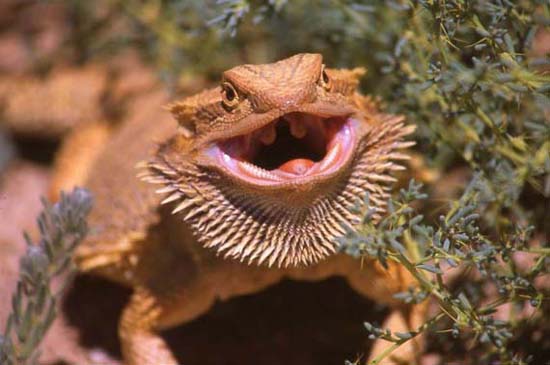Male or Female? The Ultimate Guide to Determining Bearded Dragon Gender
Introduction
Bearded dragons are one of the most popular reptile pets around the world. Their docile nature, easy care, and charming looks make them a favorite among pet owners. If you are someone who owns a bearded dragon as a pet, it’s essential to learn the basics of how to determine the gender of your pet. Knowing your bearded dragon’s gender isn’t just important for identification purposes. It also plays a vital role in how you take care of them. This ultimate guide will give you a comprehensive insight into determining a bearded dragon’s gender and how to take care of them based on their gender.
Physical Characteristics of Male and Female Bearded Dragons
The easiest way to determine your bearded dragon’s gender is by examining their physical characteristics. There are significant differences in appearance between male and female bearded dragons, which can easily help distinguish one sex from the other. Here are some of the physical characteristics to look out for:
1. Difference in Pores
One of the easiest ways to determine the gender of a bearded dragon is to look at their femoral pores. These pores are located just above their hind legs on both sides of their tail’s base. Males have larger and more noticeable pores than females.

2. Hemipenal Bulges
Another way to determine a bearded dragon’s gender is to look for hemipenal bulges. Males have two bulges just above the vent on the base of the tail. These bulges are absent in females.

3. Head Structure and Size
Males typically have a more robust and square-shaped head than females. They also have more muscle mass around their jaws, making their heads appear bigger than females.

Behavioral Differences Between Male and Female Bearded Dragons
Apart from physical differences, there are also some behavioral differences between male and female bearded dragons. Knowing these differences can help you identify the gender of your bearded dragon accurately. Here are some of the behavioral differences:
1. Aggression
Male bearded dragons tend to be more aggressive than females. They are more protective of their territory and are more likely to show dominance towards other males breeding with females. On the other hand, female bearded dragons tend to be more submissive and docile.
2. Breeding Behavior
As male bearded dragons are the ones breeding with females, they tend to show more courtship behavior than females. Female bearded dragons may become aggressive towards males during the breeding season if they are not receptive.
How to Take Care of Male and Female Bearded Dragons
Now that you know how to determine the gender of your bearded dragon let’s take a look at how to take care of them based on their gender. Although male and female bearded dragons have similar care requirements, there are a few differences to keep in mind.
1. Diet
Male and female bearded dragons have different dietary requirements. Male bearded dragons need more protein in their diet than females as they grow larger and more muscular. On the other hand, female bearded dragons require more calcium in their diet as they need to produce eggs. Make sure to provide a balanced diet based on your bearded dragon’s gender to keep them healthy.
2. Enclosure Size
As male bearded dragons grow larger than females, they need a more substantial enclosure to live in. A larger enclosure will help keep them active and allow them to roam around freely. For female bearded dragons, an enclosure of the same size as males is still suitable.
3. Clutch Size
If you have a female bearded dragon, she may lay eggs even without a male present. These eggs are infertile but still require proper care. Female bearded dragons can lay up to 20 eggs in one clutch. Make sure to provide a suitable place for her to lay her eggs and monitor her closely for any signs of distress.
Conclusion
Determining the gender of your bearded dragon is an essential aspect of taking care of them. With the help of this guide, you should now be able to accurately identify your bearded dragon’s gender and provide them with the appropriate care. Whether you have a male or female bearded dragon, always remember to provide them with a balanced diet, proper enclosure, and regular check-ups with a veterinarian. With proper care, your bearded dragon will live a long and healthy life as your favorite pet.


